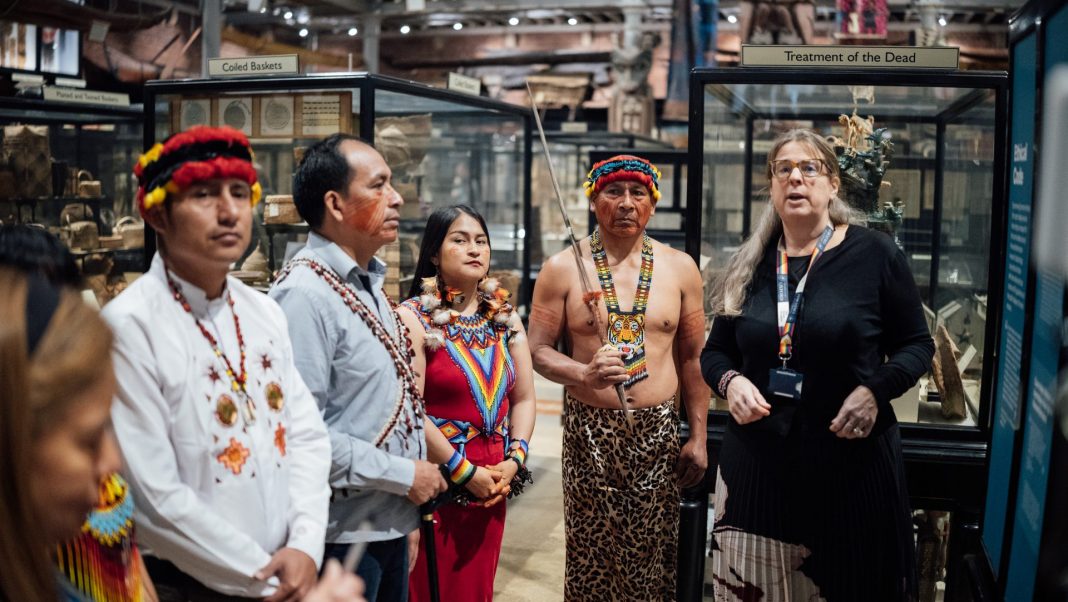Delegates from the indigenous Ecuadorian Shuar people called for the repatriation of shrunken heads stored at the Pitt Rivers Museum during their visit to the UK earlier this month. The Museum houses Oxford University’s historical and archaeological collection.
The visit lasted from 5th to 12th October and was organized by Proyecto Tsantsa, a project started in 2017 by the Pitt Rivers Museum, Ecuador’s Universidad San Francisco de Quito, and several Shuar groups, including Federación Interprovincial de Centros Shuar. The project aims to foster knowledge-sharing and consideration of Shuar expertise when discussing the group’s cultural heritage.
The delegation was made up of Shuar community leaders, elders, students, and professors. They visited various sites across Britain, including the Pitt Rivers and the British Museum and offered advice about how to care for items acquired from the Shuar in a culturally sensitive way.
Most of the shrunken heads, or tsantsas, contained in the Pitt Rivers Museum were obtained from the Shuar between 1884 and 1936. During European colonisation, tsantsas became in demand among European settlers, who often traded them for weapons. The Pitt Rivers tsantsas were removed from public view in 2020 as part of the museum’s “decolonisation process”, after an internal review found that the displays reinforced racist stereotypes.
Pitt Rivers director Professor Dr Laura Van Broekhoven noted that the tsantsas received consistent attention from visitors, telling the BBC: “People were saying ‘look how savage, how primitive, how gruesome, how disgusting’.
“The Shuar actually said, ‘that’s not what we want, we don’t want to be portrayed that way – if you’re going to put our culture on display, please involve us’.”
The Pitt Rivers Museum was founded in 1884 and contains over 500,000 pieces, more than 50,000 of which are currently on display. Shrunken heads were prized during the 19th and early 20th centuries. The site’s tsantsas were obtained from collectors like the eponymous Augustus Pitt Rivers. Displays of human remains in the Pitt Rivers were replaced by text panels that outline the problematic history behind the acquisition of such objects, and the racist theories that they were used to support.
The Shuar population is estimated to number around 100,000 people, and they mostly live around the border separating eastern Ecuador from northern Peru. Shuars made tsantsas out of the heads of humans, sloths, and monkeys. Human tsantsas were made either to conserve the power of the souls of slain warriors or to commemorate the death of important leaders.
Other controversial items include several plaques and sculptures, collectively known as the Benin Bronzes, looted by the British Empire during the 1897 Benin Expedition. The Benin Bronzes are currently owned by the University. In response to the controversy, the Pitt Rivers Museum joined the international Benin Dialogue Group, which aims to promote and facilitate the ultimate repatriation of the Bronzes.
In 2022, Jefferson Pullaguari Acacho, a Shuar leader from Zamora said: “As Shuar, we don’t have anything against the world knowing our world, and for museums to have our souvenirs and talk about our cosmovision, our ways of living here.
“What we ask is that museums involve us Shuar, so that it can be us who tell the stories, and we can show the world all our instruments and aspects of the attire, the tsantsas.”


